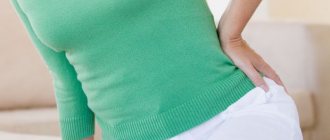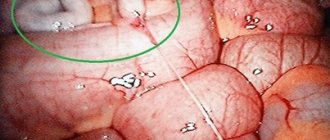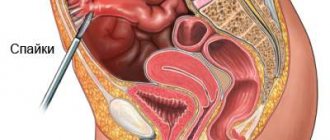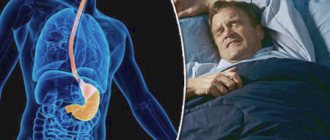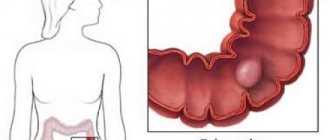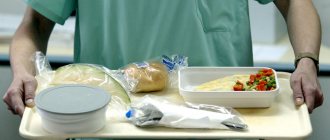The purulent-inflammatory process of the tissues of the rectum along the circumference leads to the formation of an anal fistula, severe pain, when an operation is required to excise the pathology and cleanse the cavity of purulent contents. Diseases with an acute (chronic) course are called paraproctitis; treatment after surgery can last a long time, it is labor-intensive and complex.
Most patients are people from 20 to 60 years old; this pathology is rarely diagnosed in children.
The development of therapeutic methods is carried out by the treating specialist based on the research conducted and the test results obtained. It often happens that wound healing after eliminating paraproctitis becomes protracted, so patients have to undergo long-term rehabilitation, first in a hospital, then at home in the form of daily dressings, treating wound areas with antibacterial agents to accelerate healing and regeneration of damaged tissues.
Features of surgery and rehabilitation
Surgery is prescribed in the vast majority of cases; only 10-15% of patients can do without surgery without encountering negative consequences. The main goal of treatment is to remove the purulent focus (abscess), since it is this that provokes inflammatory processes.
After the operation, a wound remains, which heals over time. The first positive dynamics are observed 2-3 weeks after the procedure. But this is only if the patient is provided with proper care during the rehabilitation period.
The operation can be multi-stage (carried out in 2 stages). First, the abscess is stopped, then the paraanal glands and anal sinuses are stopped. The 2nd stage of the operation is carried out 5-10 days after the 1st surgical intervention. The exact date is set depending on the speed of tissue healing.
Before surgery, adults are prescribed anti-inflammatory and antibacterial medications that prepare the body for subsequent surgery. The procedure is most difficult for patients of retirement age, so they require special care.
As a rule, in the postoperative period you need to do the following:
- follow a diet;
- attend physiotherapeutic procedures (after consultation with a doctor);
- treat the wound;
- try to restore stool;
- take medications if necessary.
During the rehabilitation process after paraproctitis surgery, a person should be observed by a doctor. It is necessary to periodically inspect the wound. In the doctor's office, the patient may experience discomfort, since during the examination not only the dressing is changed, but also the operated area is palpated.
Anesthesia
It is necessary to eliminate pain after surgery within the next week. Pain is relieved with various medications. It can be:
- medications for intravenous administration;
- gas anesthetics.
Local blockades are also used:
- with epidural anesthesia, central blockade of the segment;
- spinal anesthesia.
Rehabilitation after surgery sometimes includes pain management, which is controlled by the patient himself. In this case, a special electronic device for pumping liquids at a certain speed specified by the doctor introduces the pharmaceutical into the body in one of two ways:
- intravenous;
- epidural.
In the event of a shortage of medicine from the established pumping, the patient has the right to increase the dose of medicine by pressing a special button on the device. The device is also capable of monitoring the concentration of the drug in the blood so as not to lead to an overdose. The process is controlled by medical staff, but the devices themselves can be placed on the shoulder and walked with them. Then, at the next meeting with the patient, the specialist looks at the amount of additional pain relief and adjusts the entire process according to the data received.
Adequate pain relief for the postoperative period ensures an improvement in general condition, normalizes intestinal motility, restores independent urination and makes it possible to perform a full dressing. In addition, good pain relief in the postoperative period allows one to avoid complications in elderly patients and in persons with concomitant pulmonary-cardiac diseases.
It is necessary to use painkillers to make the postoperative period easier
What happens immediately after surgery
If the operation is one-stage, it takes from 30 to 60 minutes. The procedure uses caudal or epidural anesthesia. In any case, the drug is administered locally. The patient completely recovers from anesthesia within a few hours.
A person may experience severe pain after the anesthetic wears off. Under such circumstances, the doctor prescribes painkillers. Eating is possible only after 12 hours have passed after surgery. Food should be easily digestible, not greasy and not spicy. You should also not drink immediately after the operation: if the patient is thirsty, then his lips are moistened with water.
Under favorable circumstances, the patient is discharged after an average of 3-4 days.
A multi-stage operation requires the patient to be in the clinic under the constant supervision of a doctor. It is necessary to monitor the process of tissue regeneration in order to determine the date for repeated surgery. Two-stage operations for paraproctitis are carried out much more often, since complete removal of the source of the disease cannot be performed at once if there is inflamed tissue around the abscess.
At the time of discharge, patients are prescribed antibiotics and antiviral drugs. This is a necessary measure to avoid the occurrence of an inflammatory process in the body. During the recovery period after paraproctitis surgery, a complication may occur that will lead to a relapse of the pathology.
Diet for paraproctitis
A disease such as paraproctitis does not require adherence to a specialized diet. However, at the same time, the development of this disease can be influenced by factors that are interrelated with diet. In general, you should adhere to a certain diet and try to eat at least 4 times a day. Only dietary products are used, and preparation must correspond to a healthy diet.
There are several simple diet rules for paraproctitis that should be followed in the event of an acute or chronic type of disease:
- Food intake should be carried out in accordance with the regime, at least 4 times a day, at approximately the same time.
- It is necessary to eat hot food at least once a day.
- Dinner should be low in calories, avoid eating meat, and limit your carbohydrate intake.
- It is preferable if all products are low in fat.
- Cooking should be done by steaming or boiling. You can also bake, but you should limit your consumption of fried foods cooked in vegetable or butter and other types of fat.
- Highly salted, smoked, hot and spicy foods, as well as confectionery products are limited.
- The broth should be secondary and weak. It is preferable if the soups are vegetable. If you want to prepare fish or meat soup, then these products should be boiled separately and added to the prepared dish.
- You need to drink enough fluid.
- You need to get rid of bad habits, or at least limit them.
Nutrition after paraproctitis surgery
After surgery, the patient must follow the correct diet. As after any surgical procedure, eating will not be allowed immediately. To begin with, the patient is offered a small amount of water. In the case of paraproctitis, eating is possible only after a few hours, depending on the patient’s condition.
Recovery after surgery at home
The first step is to provide wound care. It is necessary to constantly change the bandage and monitor the tissue healing process. A wound that does not heal indicates complications.
To ensure proper care you will need the following medications:
- Antibiotics and antivirals. They are prescribed exclusively by a doctor in accordance with the individual characteristics of the patient’s body and his postoperative condition.
- Antiseptics. Any antiseptic solution is suitable for treating a wound. As a rule, doctors advise using Chlorhexidine or Fukortsin.
- Antimicrobial and anti-inflammatory ointments. Used after an antiseptic solution. Levomekol or Levomethyl are suitable for treating the operated area. The drugs are analogues, therefore they have the same effect on the affected area.
You need to change the bandage after every trip to the toilet. Otherwise, any infection may enter the wound. To replace the bandage, you can use pharmaceutical gauze or a bandage.
The procedure is carried out in several stages:
- removing the old bandage;
- treating the wound with an antiseptic solution;
- applying a healing anti-inflammatory ointment (only to dry areas);
- applying a new bandage over the affected area of skin.
After each trip to the toilet you need to take sitz baths. They are made from a mixture of warm water and potassium permanganate. This simultaneously helps clean and disinfect the wound. Instead of potassium permanganate, you can use a solution of chamomile or other herbs.
With proper care, the wound begins to heal after 2-4 weeks. If this does not happen, then you should consult your doctor. Depending on the cause of the complication, the specialist may prescribe local antibiotics or prescribe a repeat operation.
Do not try to place gauze or bandage directly into the wound, as this will interfere with the flow of fluid.
At first, a large amount of exudate may be released from the affected area. If this causes discomfort in the patient, then any absorbent material can be applied over the wound. Regular sanitary pads are best because they stick less to the skin than, for example, cotton pads.
The wound may leak fluid mixed with blood, but there is no need to worry about this. A doctor should be contacted if the patient begins to bleed (continuous bleeding from the operated area).
Treatment in the postoperative period
Typically, paraproctitis after surgery is treated with daily wound treatment, dressings using antibacterial and anti-inflammatory ointments, vitamins and immunomodulators. Physiotherapeutic treatment is often prescribed. Various recovery methods are used - they will be discussed below.
Physiotherapy
The physiotherapeutic method of treatment is aimed at eliminating pain, accelerating tissue regeneration, and also preventing relapse of the disease. In the postoperative period, patients may be prescribed:
- ultraviolet irradiation;
- magnetic therapy;
- ultra high frequencies;
- microwave.
One of the above methods is carried out in a hospital for 10 minutes, the course of treatment is 5-14 days.
Physiotherapeutic procedures are carried out only after the acute inflammatory process has reduced.
Dressings
Dressings with ointments in the postoperative period relieve the inflammatory process in the tissues and prevent re-infection of the wound.
The first dressing is carried out 24 hours after the operation. Before applying a bandage, the wound is treated with antiseptic solutions such as Iodopirone, Chlorhexidine.
Next, a bandage is applied: for acute paraproctitis - a dry aseptic one, and for a chronic form of the disease - with the use of antibacterial ointments (Fuzimet, Levomekol). To speed up wound healing, use Methyluracil ointment.
Dressings are carried out daily, while the attending physician assesses the condition of the postoperative wound: with rationally performed procedures, there should be no signs of secondary infection (hyperemia, swelling, increased local temperature) and suture dehiscence.
Medicines
Acute paraproctitis is not an indication for the systemic use of antibacterial drugs. Usually, the chronic form of the disease is treated with antibiotics, but there may be other indications for their use:
- accompanying illnesses;
- signs of intoxication of the body;
- spread of infection to neighboring tissues;
- long-term non-healing wound;
- relapses of the disease.
Broad-spectrum penicillins (Ammoxicillin, Amoxiclav) are usually prescribed. In the presence of anaerobic infection, Metronidazole is used.
Vitamins A, E, C and immunomodulators (Imupret, Imudon) are also prescribed as general treatment. Painkillers (Analgin, Ketorolac) are used to relieve pain. Often, on the first day after surgery, patients may have a rise in body temperature - in this case, antipyretics are used (Fenbufen, Nurofen).
Rectal suppositories (Anuzol) and warm baths with anti-inflammatory and antiseptic herbs (chamomile, sage) are used as local treatment.
Active patient management plays an important role in the recovery of the body in the postoperative period. The regimen followed by the patient depends on the form of the disease:
- For acute paraproctitis, an active regimen is prescribed: you can get out of bed on the second day after surgery. To avoid an early urge to defecate, some restrictions are possible, but the patient is allowed to walk around the ward and corridor.
- After chronic paraproctitis, the regime is generally active, but depends on the volume of the operation: if surgery was performed with suturing of the anal sphincter, bed rest is extended to a week.
Early initiation of an active regimen normalizes hemodynamic parameters, prevents congestion in the lungs, increases body tone, and accelerates wound regeneration.
Stool restoration
Stool rehabilitation after paraproctitis surgery takes an average of 2 to 4 days. As a rule, it returns to normal while the patient is in the hospital. If this does not happen, the doctor prescribes a cleansing enema. If necessary, it can be done several times.
Taking a laxative is not recommended for all patients. And even if such drugs are prescribed by a doctor, they have an extremely mild effect and natural composition. It is not recommended to choose and take laxative medications on your own.
You can normalize stool at home with an enema consisting of:
- Vaseline oil;
- propolis (40-50%);
- emulsion ointment with an antiviral component (for example, interferon).
The oil base promotes rapid excretion of feces.
Prevention of paraproctitis
Prevention and prevention measures are simple. Avoiding the development of paraproctitis means:
- avoid a sedentary lifestyle;
- monitor your diet, eliminate dry snacks on the run;
- drink more fluid at least 2.5 liters per day;
- move more, walk;
- avoid hypothermia;
- treat infectious diseases in a timely manner;
- do not ignore the first signs of discomfort in the pelvic area and consult a doctor at the initial stage;
- lean less on fatty, sweet, fried foods.
If you had to undergo an operation to eliminate paraproctitis, then the main preventive condition is timely care of the wounds after opening the fistula, dressings with antiseptic drugs (Chlorhexidine) three times a day.
Warm sitz baths with the addition of medicinal herbs after bowel movements are useful.
The appearance of blood or other discharge from wounds should not frighten patients in the first 6-7 days after surgery. But the recovery period can last up to 3 months with quite a long healing of scars. In the first months, you should avoid going to the pool, lifting weights, and active sports activities.
The main thing is to prevent exacerbation of paraproctitis and prevent the formation of a fistula in the anus again. It happens that in the period after surgery, cramps in the abdomen and perineum, serous discharge, increased local temperature, problems with urination, constipation, and signs of flatulence occur. This may indicate a relapse of the disease.
The appearance of alarming symptoms of paraproctitis cannot be ignored. You need to visit the proctologist again. It is possible that the operation will be repeated. It is impossible to hope that everything will return to normal by resorting to dubious methods of traditional medicine. This is dangerous and can cause serious complications.
You can learn more about the disease from the video:
Recommendations for following the rules of the postoperative period in the following video:
What happens to patients with paraproctitis immediately after surgery? What can you do and what can't you do? First of all, you need to follow all the instructions and recommendations of the doctor and nurse. The anesthesia wears off shortly after waking up. Pain and discomfort may occur in the area of the postoperative wound. If these sensations are strong, then various painkillers are prescribed.
Eating and drinking are allowed several hours after surgery. Food should be light and gentle. You should not eat gas-forming foods, fried, highly salty or sweet, or spicy.
After surgery for paraproctitis, a bandage is applied to the wound, which is removed the next day. This may cause discomfort.
The stool is usually restored after 2-3 days, otherwise a cleansing enema is prescribed. The length of stay in the hospital can vary from several days to a week or even more, it all depends on the complexity of the surgical operation performed, the condition of the sick person, and his well-being.
Diet
Surgery and recovery after paraproctitis is a difficult process that exposes the body to stress. In addition to a special diet, the doctor may prescribe immunostimulating drugs and vitamins. Such medications are especially often recommended for patients of retirement age and people with weakened immune systems.
A special diet includes foods that are easily digestible by the body. At first, the patient should not eat meat (in any form). Starting from the second postoperative week, boiled lean chicken is allowed.
A person needs to completely exclude sweet, starchy, spicy, fatty and gas-forming foods (in particular, carbonated water) from the diet. It is not recommended to eat overly salted and seasoned foods.
An ideal diet includes soups, cereals, boiled or steamed fish, white meat, vegetables and fruits. In order to speed up stool recovery, dried fruits are consumed, especially prunes. This is a good replacement for pharmaceutical natural laxatives.
You need to strictly adhere to the diet for at least a month of the rehabilitation period.
Diet rules for paraproctitis during illness and after surgery
Diseases of the rectum cause inconvenience and discomfort. A fairly common ailment of this part of the gastrointestinal tract is paraproctitis. Its source is pathogenic bacteria that provoke inflammation of the perirectal tissue. To ease the course of the disease and bring the path to recovery closer, you need to take seriously the issue of nutrition for paraproctitis.
Diagnosis, treatment and prevention of paraproctitis
Paraproctitis manifests itself in the form of purulent foci in the rectum, resulting from the action of pathogenic flora on injured areas of intestinal tissue. The causes of internal damage are:
- constipation and indigestion,
- anal sex,
- weakened immunity,
- lack of hygiene,
- concomitant diseases of the rectum.
The onset of the disease is accompanied by acute pain in the lower abdomen and anus, unsuccessful urge to go to the toilet, and pain during urination. There are also symptoms similar to those of poisoning: high body temperature, no desire to eat, weakness, faintness.

